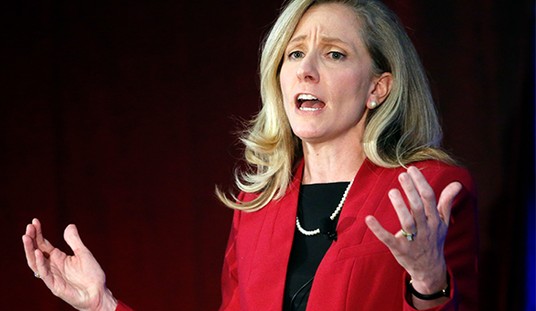On Tuesday there will be 435 seats in the United States House of Representatives up for grabs as voters go to the polls. Well… at least in theory there will be. In reality, as Charlie Cook rates it, 370 of those seats are so completely safe for the party / incumbent holding them that they aren’t worth talking about. Another 39 in the likely or lean categories may be close enough to provide a little local excitement, but are highly unlikely to change. At the very bottom of the barrel there are just 26 seats out of 435 (or 5.9%) which are either too close to call or in danger of changing sides.
If we have this many carbon copies showing up every two years, who on Earth would want to massively increase the number of these political creatures? But it seems that there is a case to be made in some quarters, such as by Brian Frederick, that we need 680 Representatives, not 435.
The vast majority of citizens in this country think most members of Congress have lost touch with the people and don’t represent their interests. There are not many simple answers to remedy this problem but one change that might help bring members of Congress closer to the people is to increase the size of the US House of Representatives to 680 members.
One hundred years at 435 seats
For almost a century the House has consisted of 435 members. This seemingly permanent fixture of American politics often obscures the reality that during the first century of the country’s existence the House was increased almost every ten years after its original size of 65 members was established.
I saw this story at Outside the Beltway, where Doug Mataconis has assembled quite a collection of references on the history of how we arrived at the magic number of 435 and why it hasn’t budged in so long. It’s well worth a look, and I won’t try to reproduce it all here. But would increasing the chamber membership to 680 – or even 6000(!) – improve anything?
A House of Representatives of 680 members would make the House of Representatives thirty seats larger than the British House of Commons, which has 650 members representing a population of some 64.1 million for an average constituency size of roughly 98,000 people. A House that matched this ratio would have over 3,000 members, which is obviously impractical, of course. By way of another comparison, the Indian Parliament has 795 members divided among a population of more than 1.2 billion people for an average constituency size of more than 1.5 million, which is larger than the roughly 700,000 people we have now and seems to be far too large a constituency for a nation such as ours. By contrast, a House of Representatives with 680 members would have an average District population of roughly 460,000 people. That’s certainly larger than the numbers that the apportionment Amendment proposed in 1791 would have allowed, but it’s certainly better than where things are now and allows for Members to be more responsive to their constituents because there are fewer of them to respond to, and for individual constituents in larger population districts to have a greater say in who represents them.
For no other reason than dispelling an immediate, queasy feeling in my stomach, I tend to rebel against the idea of adding even more members of Congress. Having nearly 700 of them squabbling over everything from major national policy to what to call the french fries in the cafeteria just gives me the willies. But I suppose there might be some benefits to consider. There are currently more than 700,000 people in each district on average. That’s a lot of folks to convince if you want to run for office, and competitive House races can get nearly as expensive as Senate races, which narrows the pool of people who can realistically take a shot at it. It’s also hard to make your voice heard to the representative when shouting from a crowd that large. And, at least in theory, the races would be more competitive.
But would it be enough of a shift to make a difference? As Doug notes, even if we went to 680 there would still be nearly a half million people in each district. And except in the largest cities, there would still be a lot of turf to cover in a campaign. The idea of the unfunded, smart outsider going door to door and winning over the electorate wouldn’t be much more achievable than it is now. I’m just not seeing the payoff as being worth the swelling of the payroll on the Hill. Further, it would require the buy-in of both the White House and the leadership in both parties (whose members would see their power diluted) to pull it off. Not bloody likely.
In my never very humble opinion, if you want to shake things up in Congress, increase the level of competitiveness and draw in new blood on a regular basis, we need to go to a new method of redistricting, probably left up to computer models designed to create contiguous, compact districts in as much as is possible. It doesn’t address all of the perceived challenges described above, but it would at least be a start and might be more doable than trying to create roughly 250 more districts.








Join the conversation as a VIP Member